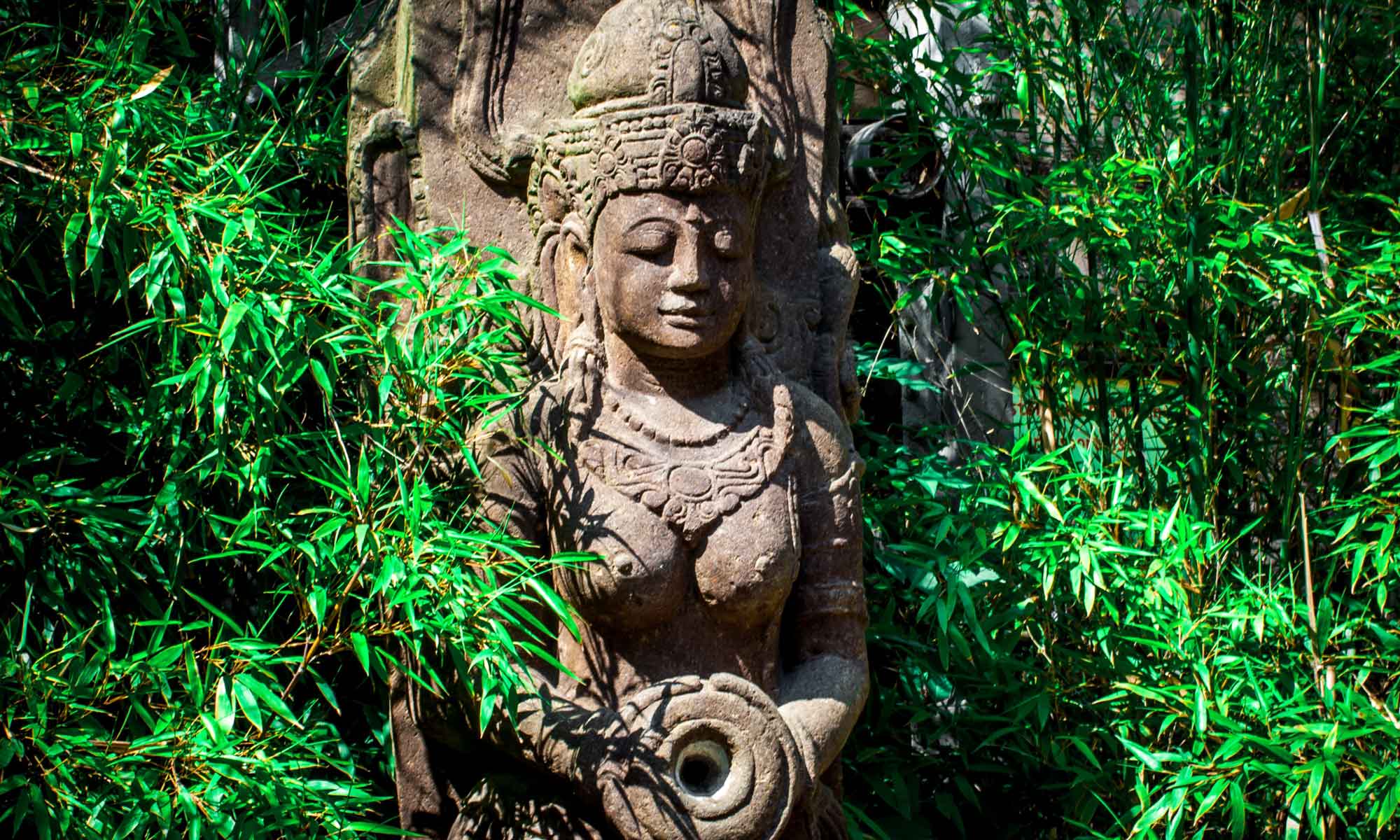
What do Ganesh, Oshun, Saint Martha, snake charmers and mermaids have in common? They are all featured elements in the iconography of Mami Wata, the African/Caribbean great goddess of waters. And they are all well represented in the magnificent art exhibit that bears her name. This exhibit is on its way to the Smithsonian in April, 2009.
“Mami Wata: Arts for Water Spirits in Africa and its Diasporas” was first exhibited at UCLA’s Fowler Museum, and then in Madison, Wisconsin, where I saw the exhibition in November.
In April, Mami Wata will make her appearance at the Smithsonian Museum of African Art on the Mall in Washington, DC (April 1-Ju;ly 26 2009). For anyone interested in art history, icons, and the permeable nature of influences in world art—this exhibit will hold your interest. For anyone interested in music, dance, and art of the African diaspora—you will be delighted with the variety of art forms on display. And for anybody with an eye to celebrate goddesses and women in art—this exhibit is worth the trip.
Starting with African water spirits and goddesses, exhibit curator Henry John Drewal painstakingly explains intricate relationships among myths and migrations. Viewers are able to trace the influence of colonial conquerors, traders, and Buddhist and Hindu images. The exhibit also includes Caribbean artwork by Pentacostal artists, warning believers against calling on this “old” and “evil” figure for help achieving love and power.
The layout of this exhibit provides a clear path for building understanding of Mami Wata’s many manifestations. It is as though, like her great river of life, Mami Wata rolls forward into new lands and picks up new forms and associations as she grows. It’s a great example of the growth and adaptation of myth across cultures. I went all the way through the gallery twice, to follow her trail again.
Whether or not you can make it to the Smithsonian, you might want to add the excellent accompanying book to your collection. It’s reasonably priced and loaded with enough pictures to keep an artist like me inspired for a long time to come. I am now at work on some Mami Wata icons of my own, in response to the Caribbean traditions.
Meanwhile, here is a powerful image that was the origin of one major type of Mami Wata in art. It’s a German circus poster from 1888, depicting the snake charmer Maladamajaute. (See the book and exhibit for the story of how her image went from India to West Africa and became adopted as Mami Wata.) Despite its clearly commercial origin, this image conveys to me the power and serenity of a woman in charge of elemental forces.


Thank you for this poster and this picture. The image “came to me” and then I googled feminine deities and when I saw this poster I knew I was tapped into this deity. Beautiful & powerful, thank you…
I am presently working on a book about the Water spirits.. merfolk, deities, and human encounters with them. I’d appreciate any research recommendations, and especially any stories members would like to share. Thank you.
Teish
Hi Luisah,
This is wonderful news! We are setting up a member blog to share research and resource needs. With the conference coming up, I hope we will have a “bulletin board” for announcements. I look forward to reading your book.
Mami Watu–so that’s Her name! She’s been with me, swirling about at even and odd moments, for years–snake totem included.
Thanks. Sid and Pat, for sharing some of Her visual and herstorical dimensions. She’s an
amazing validation for us all. Blessed be!
Alafia my sisters:
I saw the Mami Wata exhibit at the Fowler Museum in Los Angeles. It is exquisite! The variety of works expressing the essence of this Goddess is testament to Her survival in the face of Xtain oppression and defamation. You’ll laugh at the artist who calls himself “God the Almighty” and notice a dozen small but deep characteristics embedded in the sculptures. But be careful standing in front of the big drum…it is entrancing… and please don’t touch it.